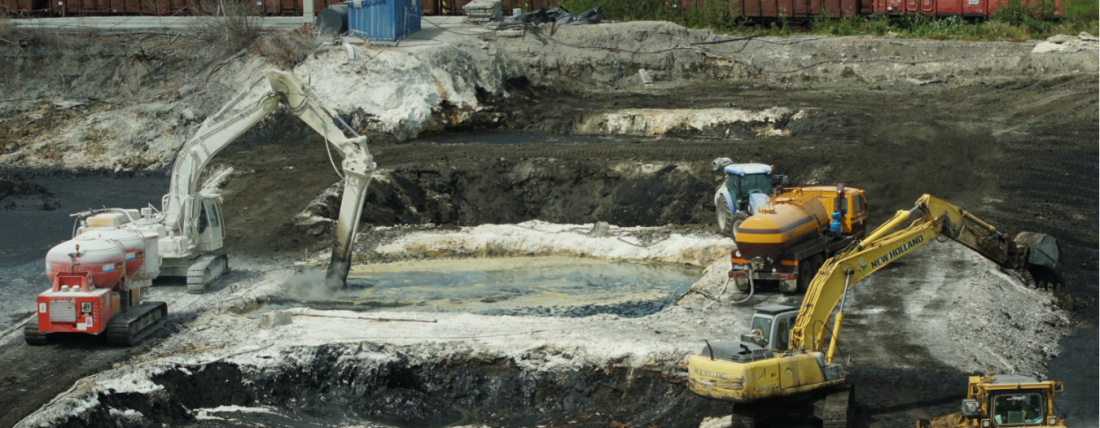Bioremediation, while not new, is a remediation option that has only recently become a more accepted and utilised technique within Australia.
As an in-situ technology, it removes many of the risks and obstacles that other remediation techniques present. Bioremediation relies on live organisms to break down pollutants within the contaminated sample and requires the environment to be compatible with the process.
To ensure bioremediation is possible for your site, a process of contamination analysis needs to be undertaken. This is a multifaceted process which can often take up to six months.
Understanding your sites ability to engage bio alternatives is critical to the success of bioremediation implementation. While potentially a larger time commitment than traditional remediation methods, the environmental, social and financial benefits bioremediation offers far outweigh the initial commitment.
Consider the limitations of remediation
Some would be turned off by the fact that straight away, there is a chance – albeit a small one – that bioremediation might not work for you. This is compounded by the significant commitment to primary analysis even before de-contamination works begin.
It is important however, to remember that limitations exist within all forms of remediation. Even traditional, ‘straight forward’ methods of remediation (for example, pump and treat) come with a cost, and are not always compatible with site needs.
Traditional remediation success relies on multiple factors, and can be inadequate due to reasons such as:
Low budget or high cost of technologies
Low remediation budgets are often not compatible with the high costs of labour, equipment and energy required to excavate or pump and treat contaminated material.
Contamination spread
Physically relocating contaminated materials increases the risk of spreading the contamination to nearby environments and/or communities. This can lead to further problems and costs as you face environmental and social backlash.
Environmental damage
Spread of contaminants or interruption of the surrounding environment from digging equipment and works can damage ecosystems and disturb the natural environment or organisms of the existing site.
On top of the potential disadvantages of pump and treat-like options, there are some cases in which the ability to undergo this type of remediation is completely impossible.
Confined real estate or significant surrounding infrastructure present physical limitations where large equipment cannot feasibly operate.
Therefore, understanding site and project parameters – including budget, location and pollutant type – before deciding on a remediation method is vital.
Failing to recognise and consider alternative remediation techniques as real and potential solutions is limiting yourself to expensive and potentially damaging methods.
The science of site compatibility
While an incredibly viable option for most sites, the choice to undergo bioremediation comes down to more than whether it is an economically or environmentally sound decision.
Analysis of contaminated materials and pollutant chemistries are required to determine site compatibility, and how to accurately implement suitable biomes to carry out pollutant breakdown.
Analysis includes multiple steps, some of which can be carried out onsite and others that require expertise and laboratory settings to gain key understandings.
These include:
- Measure environmental parameters, including pH and ORP – a standard procedure of any site analysis
- Collect and send samples of contaminated material for lab testing, to quantify pollutant concentration.
- Incubate samples under ideal conditions to investigate activity of organisms indigenous to the contaminated matrix
- Determine abundance of relevant organisms and genes to ensure organisms can break down contaminants of concern
- Determine whether reactions catalysed by organisms are occurring using compound specific isotope ratios
Each of these steps can take between two weeks and two months to complete, and require specialised testing and experience.
What if I’m not compatible?
While between 80-90% of analysed sites are viable for bioremediation, there are some that ultimately are not. This could be due to one or several reasons, including:
- High or low pH
- High or low ORP
- High salinity
- High contaminant load
In these situations, a combination of approaches is often appropriate. Sites are able to utilise multiple remediation methods to effectively remove contamination, while sticking within project parameters.
Sites often have a ‘source zone’ where the contamination occurred, and pollutant concentrations are too high for microbes to survive or be active. Chemical (reduction and oxidisation) or physical (pump and treat) methods can be used to address the source, with bioremediation then being implemented to treat the rest of the contaminated area.
Assess, approach, analyse – and achieve the benefits
It is important to assess your site and your parameters to ensure you’re implementing the most appropriate remediation method possible, because the difference in outcome can be bigger than you think – and exploring the option is immaterial.
Recently, two large companies who were both dealing with chemical contamination took different approaches to remediation. One committed to physical treatment, costing them over $150 million. The other, after analysis, went forward with bioremediation. Their costs came to less than $10 million.
This is just one example of the significant economic impact your choice of remediation techniques can have on your business. However, as technologies and attitudes continue to change, so will your priorities. Environmental and social impact are becoming more of a focus for many businesses, and should also come into consideration in remediation.
When deciding which option to choose, the sustainability (environmental, economic and social) of each option should be considered, in terms of achieving an appropriate balance between the benefits and effects of undertaking the option – National Environment Protection Measure 1999
Overall, the time commitment and environmental parameters of bioremediation is a small cost compared to the outcomes it can deliver:
- Improved social perception as a forward-thinking and environmentally conscious business
- Considerable cost savings
- Immediate results
- Invisibility – minimal equipment or labour required
- Minimised risk of contaminating surrounding environments or staff
- Minimised disruption to commercial activities or infrastructure
- Maintaining natural ecosystem with decreased pollutants
As a technology much different to traditional methods, bioremediation can be difficult to fully understand. But certainly, beneficial to implement.
As an emerging technique in Australia, bioremediation expertise can be difficult to source. Novorem are locally based leading experts in bioremediation, with wide experience undertaking site testing, analysis and implementation in the Australian market.
If you are interested in exploring bioremediation and determining the benefits for your site, get in touch with me via email or call me on +61 2 4869 3261
Author bio:
Önder Kimyon is the principal scientist of Novorem Pty Ltd and is a renowned expert in environmental science and microbiology.
Önder and the Novorem Team have made award winning contributions to environmental research and biotechnology development, including the biological degradation of contaminants of concern.
If you would like to know more about microbiology or bioremediation, click here to contact Önder.


